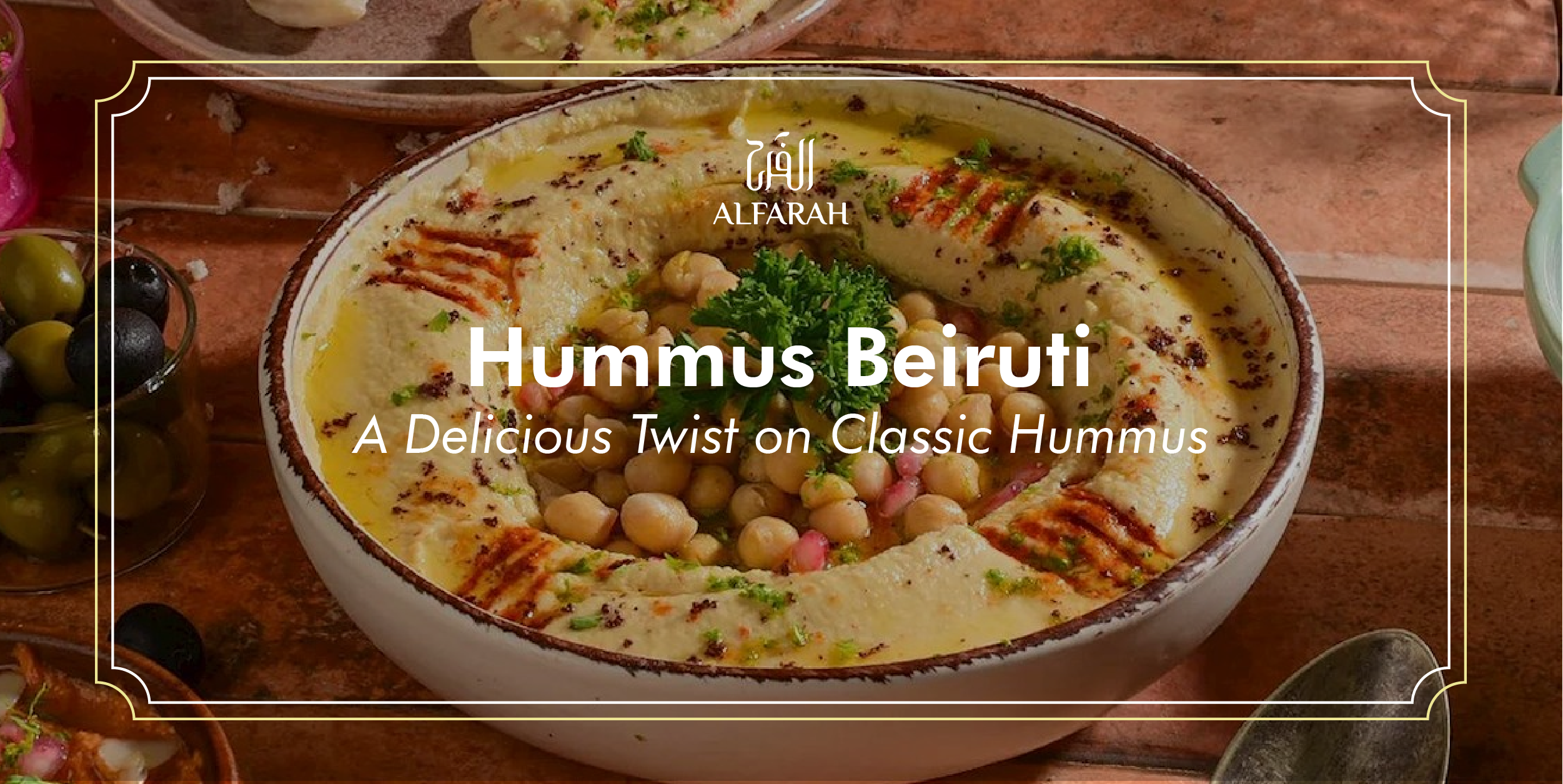Hummus Beiruti is a version of the original hummus from Beirut, Lebanon. It retains the most common ingredients—chickpeas, tahini, and olive oil—but enhances them with bold ingredients like garlic, parsley, and occasionally chili. This flavor profile makes Hummus Beiruti a delicious, piquant, and aromatic dip many enjoy.
Origins and History of Hummus Beiruti
Hummus traces its roots back to the Middle East, although its origins can never be determined. Traditional hummus remains a staple throughout many countries of this region, whereas Beiruti is truly Lebanese. Its name, of course, evokes Beirut, the culinary capital of Lebanon. The variant became popular for its strong flavor and has since found itself mostly represented on mezze platters worldwide.
How Does It Differ from Traditional Hummus?
Whereas traditional hummus typically celebrates smooth, subtle chickpea and tahini flavors, Beiruti hummus is about boldness. Generous garlic and parsley create a bright, fresh kick. Some recipes go as far as throwing in red chili or cumin for depth. Hummus Beiruti is definitely different than its more tame cousin, which doesn’t say much.
Ingredients That Make Hummus Beiruti Unique
Classic Ingredients of Traditional Hummus
The base of Beiruti remains true to its traditional roots, including:
- Chickpeas: The star ingredient, providing a creamy texture and rich protein.
- Tahini: A sesame paste that adds nutty depth.
- Lemon Juice: For tangy freshness.
- Olive Oil: Ensures a smooth and luscious finish.
Unique Additions in Hummus Beiruti
Hummus shines because of its special enhancements:
- Garlic: A bold addition that enhances the dip’s flavor.
- Parsley: Freshly chopped parsley adds a herby brightness.
- Spices: Add some cumin or chili flakes to make it spicier.
How to Make Authentic Hummus Beiruti at Home
Making Hummus Beiruti is simple, and with a few secret tips, you can achieve restaurant-quality results in the comfort of your kitchen.
Step-by-Step Recipe
Ingredients:
- 1 cup cooked chickpeas
- 2 tablespoons tahini
- Juice of 1 lemon
- 2 minced garlic cloves
- 2 tablespoons olive oil
- A handful of fresh parsley
Salt and optional chili flakes
Directions:
- Blend chickpeas, tahini, lemon juice, garlic, and olive oil in a food processor.
- Add parsley and pulse until it becomes finely incorporated.
- Season with salt and spices to taste.
- Serve chilled, drizzled with olive oil and parsley or chili flakes.
Tips for Achieving the Perfect Creamy Texture
- Use freshly cooked chickpeas for the creamiest consistency.
- Peel chickpeas gently by rubbing them against a towel before blending.
- Add a splash of ice water to blend it extra silky.
Common Mistakes to Avoid
- Adding too much garlic which could overpower all the flavors
- Leaving out the parsley which is what sets Hummus Beiruti apart
- Poor quality tahini or olive oil would downgrade your whole dish
Nutritional Benefits of Hummus Beiruti
Protein and Fiber Content
Since chickpeas are packed with protein and fiber, the snack is satisfying and nutritious.
Low-Calorie, High-Flavor Option
Despite its savory flavor, Hummus is surprisingly low-calorie especially when compared to other dips and spreads. It makes it ideal for health-conscious eaters.
Health Benefits of Chickpeas, Tahini, and Garlic
- Chickpeas: Aids in digestion and supply slow-acting energy.
- Tahini: Rich in healthy fats and antioxidants.
- Garlic: Boosts immunity and possesses anti-inflammatory effects.
Hummus Beiruti in Modern Cuisine
Popularity of Hummus Beiruti in Middle Eastern Restaurants
Hummus Beiruti is now one of those standout dishes in many Middle Eastern eateries. Vibrant flavors and colorful presentation make it a crowd-puller.
Creative Pairings
This flexible dip goes well with:
- Warm pita bread
- Fresh vegetable sticks
- Grilled meats like lamb kebabs or chicken shawarma
Cultural Significance of Hummus Beiruti
The Dish’s Symbolism in Middle Eastern Hospitality
Hummus is not just a food item; it reflects love and generosity. In Lebanese cultural values, offering this dish is a sign of showing love to guests.
Variations Across Different Regions
Though the version of Beirut is the most preferred one, variations are found in Lebanon and neighboring states with slight alterations in spice as well as garnish.










